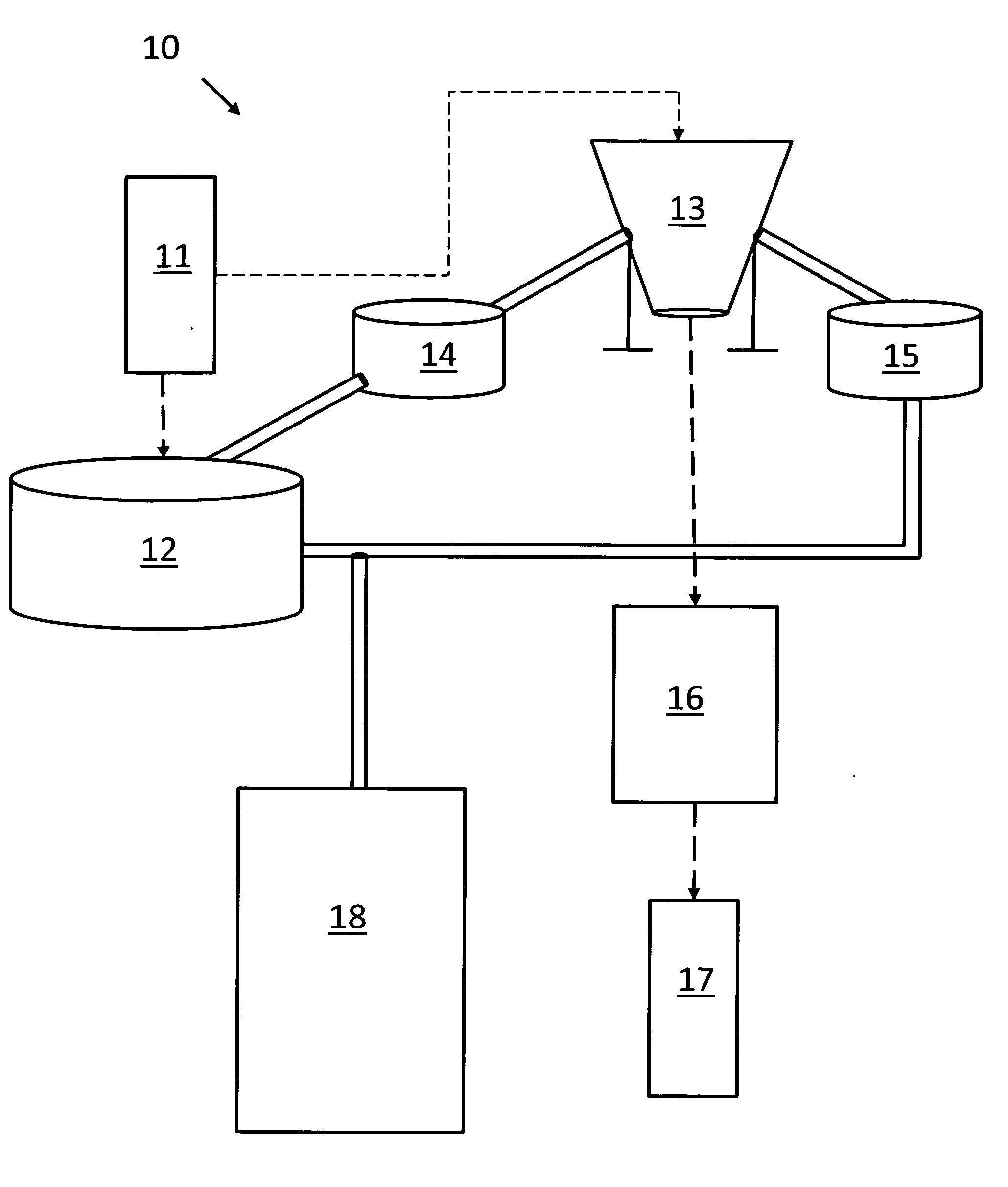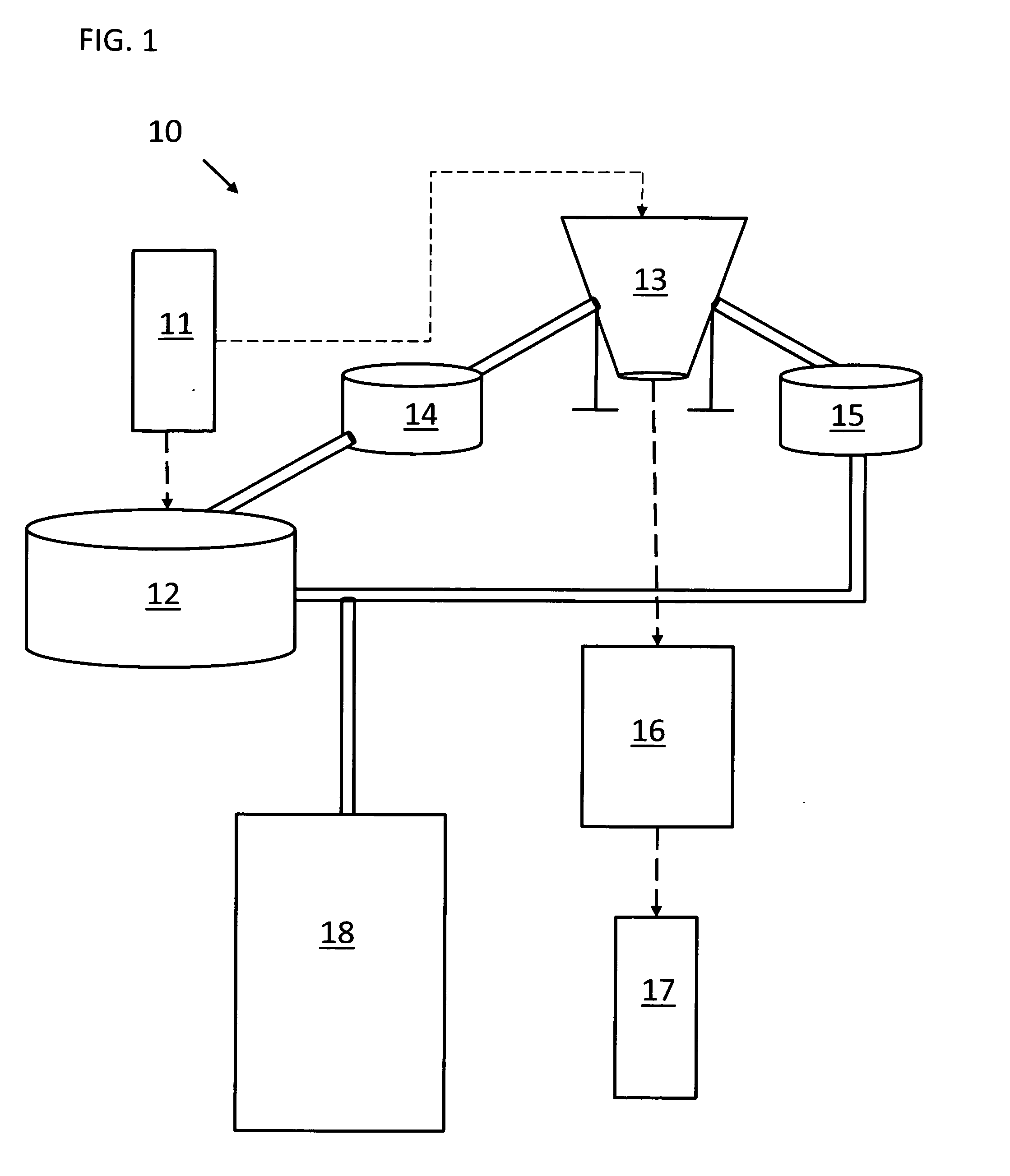System and method for reprocessing animal bedding
- Summary
- Abstract
- Description
- Claims
- Application Information
AI Technical Summary
Benefits of technology
Problems solved by technology
Method used
Image
Examples
example
[0057]Soiled bedding in the form of wood shavings used in a horse stall and containing horse manure is cleaned using a series of washing, rinsing, and bleaching steps. A bag containing approximately 50 gallons of used bedding is first run through a shaking operation to separate most of the manure from the remaining bedding. A gallon of the soiled bedding from which the manure is substantially removed is then placed in a cleaning vessel having a capacity of about five gallons and there washed in about three gallons of a washing solution comprising water to which a quarter-cup of liquid domestic laundry detergent is added per gallon of bedding. The soiled bedding is agitated in the solution for 20 minutes. Then the vessel is drained and refilled with two gallons of rinse water. The soiled bedding agitated periodically during a 20 minute rinse cycle. Thereafter, three-quarters of a cup of 12.5% sodium hypochlorite bleach is added to bleach the shavings to substantially restore their or...
PUM
 Login to View More
Login to View More Abstract
Description
Claims
Application Information
 Login to View More
Login to View More - R&D
- Intellectual Property
- Life Sciences
- Materials
- Tech Scout
- Unparalleled Data Quality
- Higher Quality Content
- 60% Fewer Hallucinations
Browse by: Latest US Patents, China's latest patents, Technical Efficacy Thesaurus, Application Domain, Technology Topic, Popular Technical Reports.
© 2025 PatSnap. All rights reserved.Legal|Privacy policy|Modern Slavery Act Transparency Statement|Sitemap|About US| Contact US: help@patsnap.com


